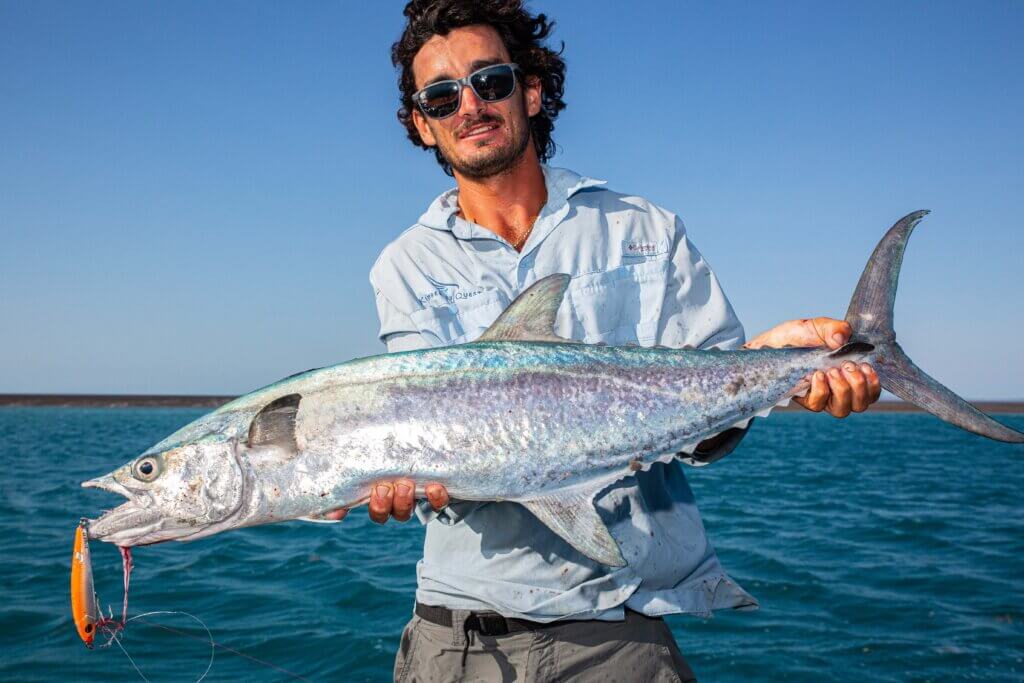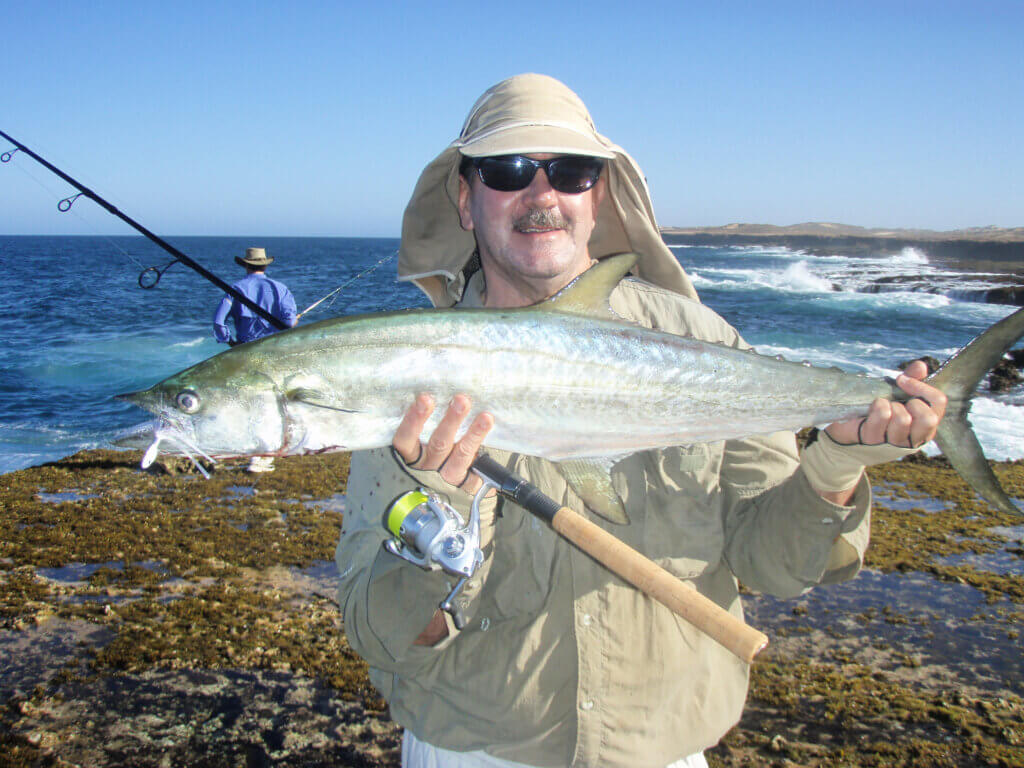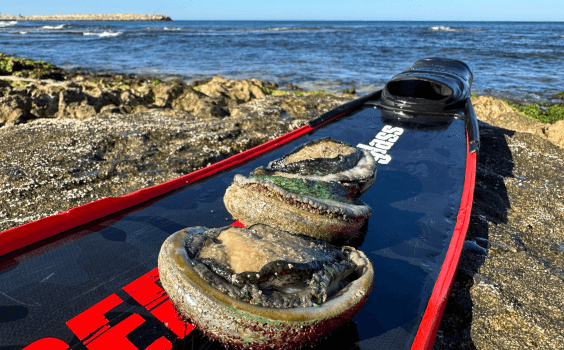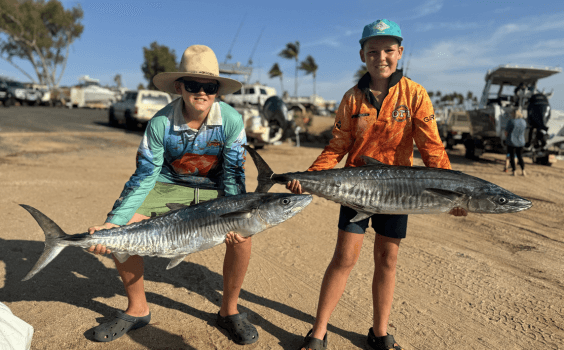Broad-barred Spanish mackerel, or more commonly know as grey mackerel compared to their more commonly caught narrow-barred brethren, are an intriguing fish to me! Writes Western Angler editor Scott Coghlan.
Species: grey mackerel, Scomberomorus semifasciatus
Eating: 3 stars
ID: Small head and pointy snout, large tail and broad stripes down side. Black colouration at front of dorsal fin.

Firstly, while I have caught them in spots where we get narrow-barred many times offshore, I don’t recall ever seeing one caught from shore, although I know other people who have done so.
Secondly, I am not sure what to make of their performance on the end of a line. Last year we have a vintage session on them at Montgomery Reef.
They were smashing baitfish on the surface in the channel and we caught a number on lures.
As has been my experience with broad-bars, they didn’t put up a huge fight although they were good-size fish.
Yet when I posted a picture on social media, someone commented that they liked catching them as they fight so hard.
I have to say my experience has been anything but that, and I am always disappointed by their performance on the end of the line.
Looking much like narrow-barred, but with a more pointy snout and broader sides, they have a large tail that certainly should offer plenty of speed.
Broadies, also called grey mackerel, certainly don’t grow as big as the other spaniards, with a maximum size of around nine kilos.
They are found from Shark Bay north and we have caught plenty around the islands off Carnarvon.
They are a willing lure taker that will respond to all the usual lures used for spaniards, including bibbed minnows, stickbaits and metals, whether trolled or cast.
My friend Andrew Jarvis used to catch them at Quobba’s Camp Rock and said they always responded well to large metals with a wobbling action retrieved quite slowly.

I would imagine ballooning would also be an effective way to catch broad-bars at Quobba and Steep Point.
As they don’t grow to huge sizes heavy tackle is not required and quite light spinning gear will be enough to catch them in most scenarios.
We were using 6-10kg outfits at Montgomery Reef and that was more than adequate.
They do have sharp teeth so I would recommend wire if chasing either type of Spanish mackerel, although I have always believed you get more bites without wire.
It’s just the lure losses can start to hurt during a hot session.
Broad-bar generally show up in schools, usually close to reefy structure and drop-offs in 8-20m, in the same locations where narrow-barred mackies are caught.






